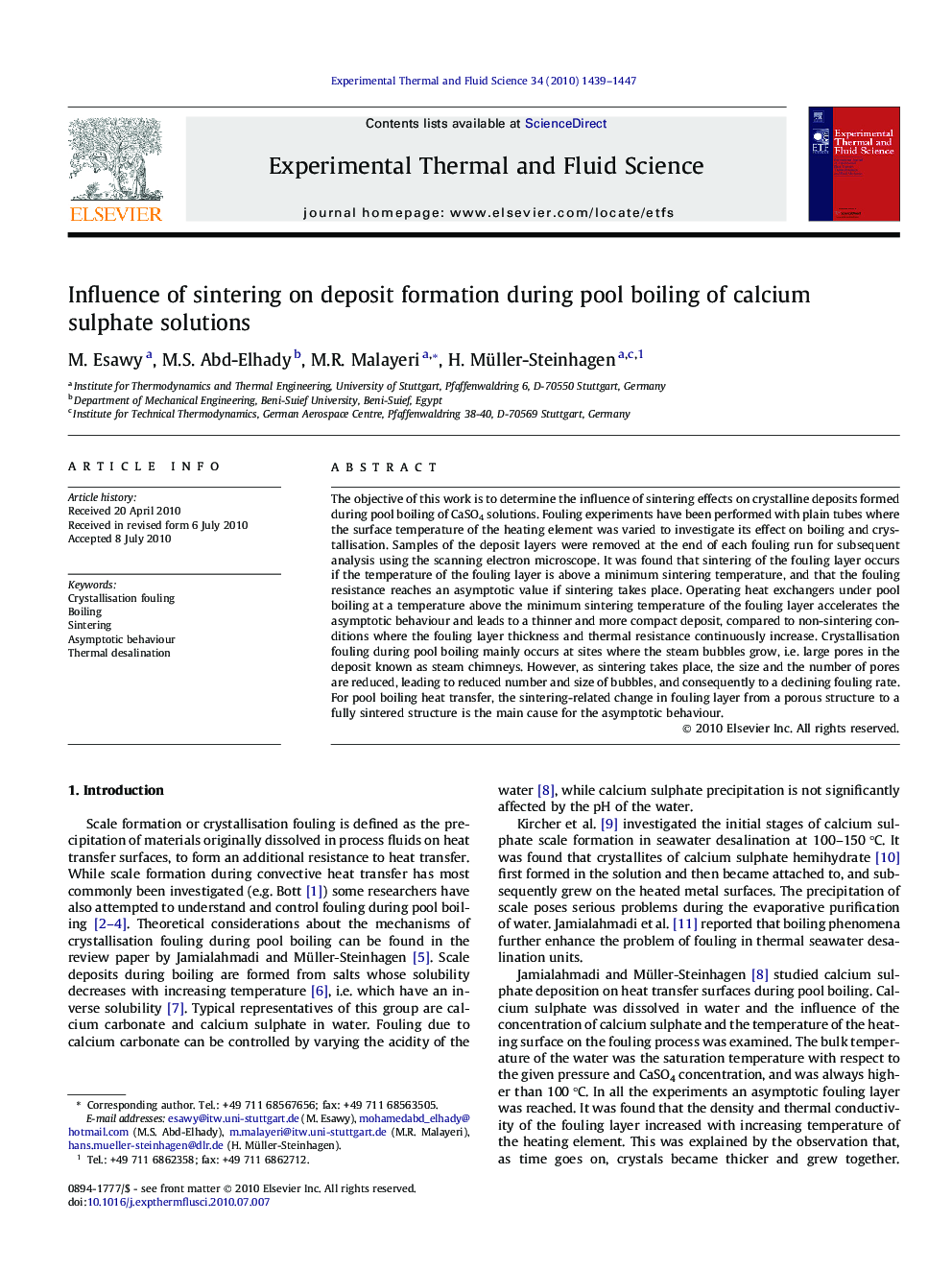| Article ID | Journal | Published Year | Pages | File Type |
|---|---|---|---|---|
| 652507 | Experimental Thermal and Fluid Science | 2010 | 9 Pages |
The objective of this work is to determine the influence of sintering effects on crystalline deposits formed during pool boiling of CaSO4 solutions. Fouling experiments have been performed with plain tubes where the surface temperature of the heating element was varied to investigate its effect on boiling and crystallisation. Samples of the deposit layers were removed at the end of each fouling run for subsequent analysis using the scanning electron microscope. It was found that sintering of the fouling layer occurs if the temperature of the fouling layer is above a minimum sintering temperature, and that the fouling resistance reaches an asymptotic value if sintering takes place. Operating heat exchangers under pool boiling at a temperature above the minimum sintering temperature of the fouling layer accelerates the asymptotic behaviour and leads to a thinner and more compact deposit, compared to non-sintering conditions where the fouling layer thickness and thermal resistance continuously increase. Crystallisation fouling during pool boiling mainly occurs at sites where the steam bubbles grow, i.e. large pores in the deposit known as steam chimneys. However, as sintering takes place, the size and the number of pores are reduced, leading to reduced number and size of bubbles, and consequently to a declining fouling rate. For pool boiling heat transfer, the sintering-related change in fouling layer from a porous structure to a fully sintered structure is the main cause for the asymptotic behaviour.
